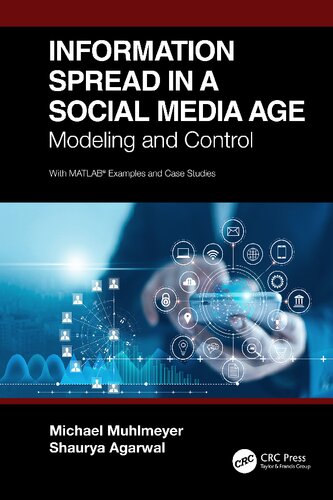

Most ebook files are in PDF format, so you can easily read them using various software such as Foxit Reader or directly on the Google Chrome browser.
Some ebook files are released by publishers in other formats such as .awz, .mobi, .epub, .fb2, etc. You may need to install specific software to read these formats on mobile/PC, such as Calibre.
Please read the tutorial at this link. https://ebooknice.com/page/post?id=faq
We offer FREE conversion to the popular formats you request; however, this may take some time. Therefore, right after payment, please email us, and we will try to provide the service as quickly as possible.
For some exceptional file formats or broken links (if any), please refrain from opening any disputes. Instead, email us first, and we will try to assist within a maximum of 6 hours.
EbookNice Team

Status:
Available5.0
23 reviewsThe rise of social networks and social media has led to a massive shift in the ways information is dispersed. Platforms like Twitter and Facebook allow people to more easily connect as a community, but they can also be avenues for misinformation, fake news, and polarization. The need to examine, model, and analyze the trajectory of information spread within this new paradigm has never been greater. This text expands upon the authors’ combined teaching experience, engineering knowledge, and multiple academic journal publications on these topics to present an intuitive and easy to understand exploration of social media information spread alongside the technical and mathematical concepts. By design, this book uses simple language and accessible and modern case studies (including those centered around United States mass shootings, the #MeToo social movement, and more) to ensure it is accessible to the casual reader. At the same time, readers with prior knowledge of the topics will benefit from the mathematical model and control elements and accompanying sample simulation code for each main topic.
By reading this book and working through the included exercises, readers will gain a general understanding of modern social media systems, network fundamentals, model development techniques, and social marketing. The mathematical modeling of information spread over social media is heavily emphasized through a review of existing epidemiology and marketing based models. The book then presents novel models developed by the authors to account for modern social media concerns such as community filter bubbles, strongly polarized groups, and contentious information spread. Readers will learn how to build and execute simple case studies using Twitter data to help verify the text’s proposed models.
Once the reader is armed with a fundamental understanding of mathematical modeling and social media-based system considerations, the book introduces more complex engineering control concepts, including controller design, PID control, and optimal control. Examples of control methods for social campaigns and misinformation mitigation applications are covered in a step-by-step format from problem formulation to solution simulation and results discussions. While many of the examples and methods are framed in the context of controlling social media information spread, the material is also directly applicable to many different types of controllable systems.
With the essential background, models, and tools presented within, any interested reader can take the first steps toward exploring and taming the growing complexity of the modern social media age.